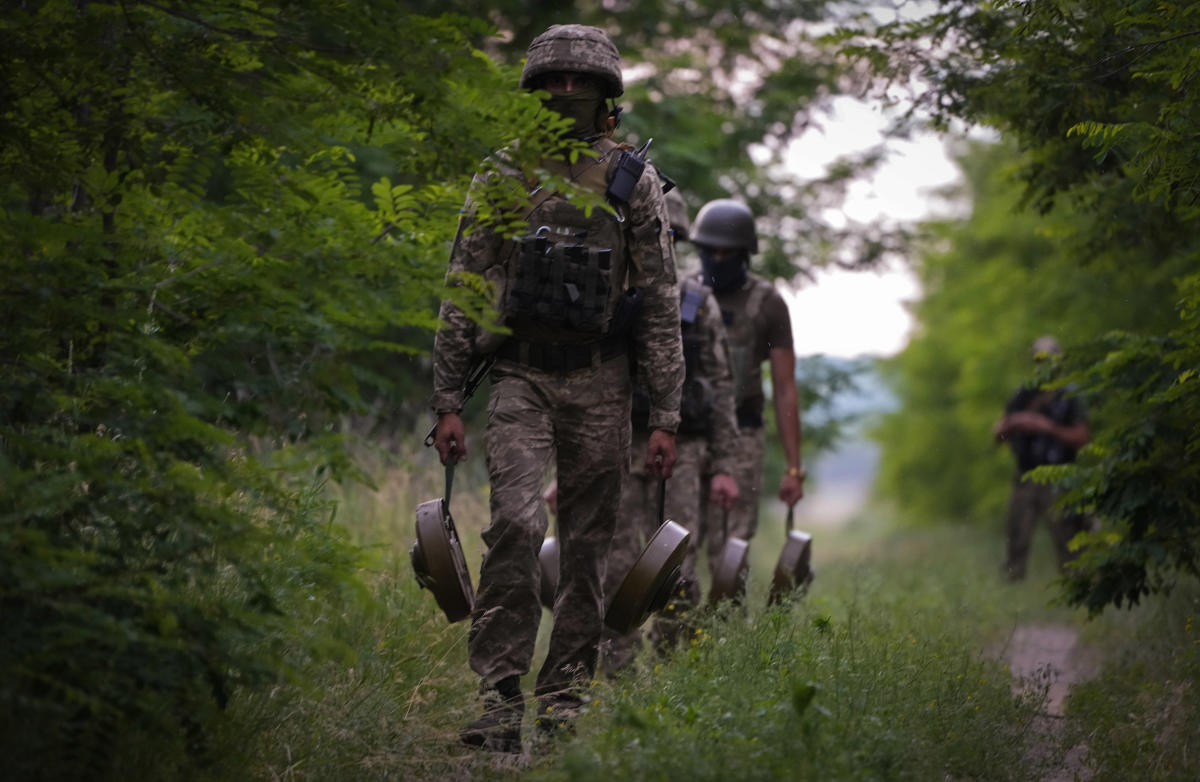
There is life amid the ruins in Ukraine, but there are so many ruins, and life is so fraught.
In the course of the last week, Associated Press photographers captured images of a man peering upward through the hole in a roof of a hospital damaged during shelling in Donetsk; of another, his arms opened wide as he looks up at the wreckage of his Bakhmut home, damaged in Russian night shelling.; of boys playing in the shadow of a wrecked apartment building in Irpan.
But there also are lives in ruins. An elderly woman, evacuated from the Lysychansk area, cries out just before departing by train for western Ukraine.
Even as smiling young women wrap themselves in the Ukrainian flag or brandish bundles of cotton candy, even as Kyivans seek relief in comedy clubs, their country’s soldiers deploy anti-tank mines to ward off Russian advances. And Russian soldiers sweep through Mariupol, the city in eastern Ukraine they conquered after reducing it to ruble.
A war that began in winter has extended through spring. A vast field of wheat unfolds behind two Russian soldiers, standing guard as foreign journalists participate in a tour of southeastern Ukraine organized by the Russian Ministry of Defense. And wildflowers on the outskirts of Kyiv blossom behind the skull and crossbones, displayed on a sign that warns of landmines.
Death is never too distant — a puddle of blood amid the debris after a Russian air raid in Lysychansk; a body pulled from a mass grave near Bucha.
But defiance is ever present, as well. In Kyiv, a woman stands astride a Russian tank. With one hand, she waves the Ukrainian flag. With the other, she wields a rifle.




